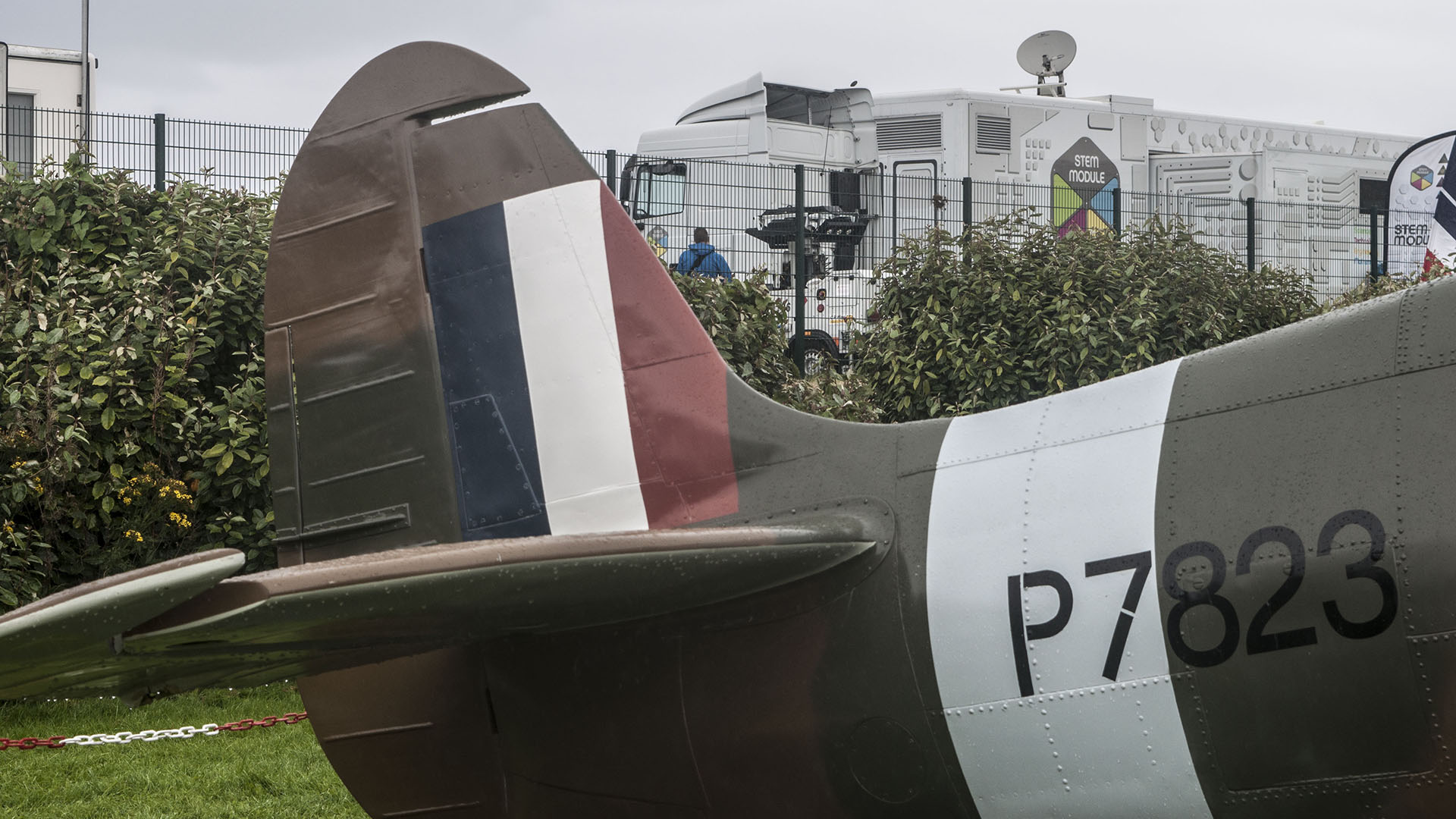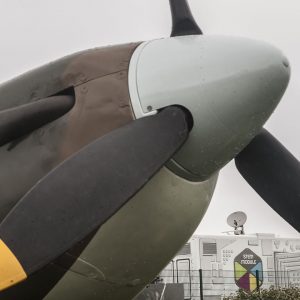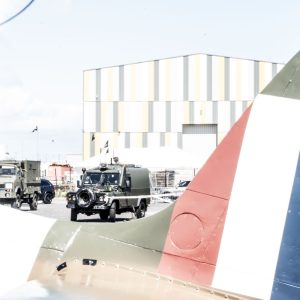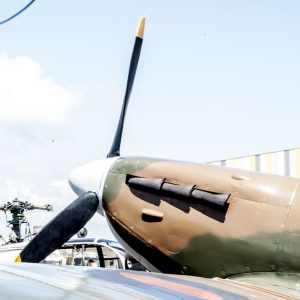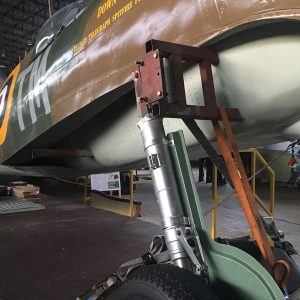On Wednesday 7th January 1942, Supermarine Spitfire P7823 came down in a field in Derrymacash, Co. Armagh. The crash site was around 3 miles north-west of Lurgan, Co. Armagh.
The pilot of the Mark IIA plane was a 27-year-old airman from Ontario, Canada, Pilot Officer Walter Bartholomew McManus (J/5469). He flew with RAF 504 (County of Nottingham) Squadron based at RAF Balyhalbert, Co. Down.
McManus was returning to RAF Balyhalbert, Co. Down from RAF St. Angelo, Co. Fermanagh when the incident occurred. The “Down” Spitfire was part of a detachment that arrived at RAF St. Angelo, Co. Fermanagh on 22nd December 1941. During its time there, the plane clocked up 2hrs 45mins of flying in the local area.
The plane attempted to return to RAF Ballyhalbert, Co. Down on 1st January 1942 but returned to the Co. Fermanagh base shortly after taking off due to adverse weather conditions. The pilot that day had brushed against trees during landing and damaged flaps on the port side. The ground crew reported the damage but no replacement flap was available. The Station Engineering Officer supervised repairs and the flap was fully operational, flush with the wing in the up position. Inspections also noted a small crack in the rear port exhaust manifold. This was a common defect and would not affect flying of the plane.
Pilot Officer McManus was aware of the repairs carried out. His Flight Commander issues instructions not to deploy the flaps during flight or on approaching to land. He was to make use of the longest runway on his return to RAF Ballyhalbert, Co. Down.
Final flight of Spitfire P7823
Weather conditions were clear on 7th January 1942 and the Flight Controller at St. Angelo gave McManus the all clear for take-off. Supermarine Spitfire P7823 was airborne at 1300hrs. At 1336hrs, McManus responded to Flight Control stating his height as 3,000 feet. With RAF St. Angelo getting a good fix on the plane, McManus confirmed a height of 4,000 feet at 1344hrs. On receiving permission from Flight Control, he switched radio frequency, contacting RAF Ballyhalbert, Co. Down at 1345hrs. He radioed again at 1347hrs, repeating his earlier message. It became clear that Ballyhalbert’s Flight Control could hear McManus loud and clear but he could not hear them.
McManus’ Spitfire came down at 1350hrs. The plane had been attempting a forced landing and swerved to avoid higher ground before nose-diving into the ground. A local witness, Henry Lavery, corroborated this version of events.
A local Royal Ulster Constabulary man, Constable Victor Ringland, received a phone call from a Mrs. Fford on Raughlan Lane, Lurgan, Co. Armagh. She reported the crash in a nearby field belonging to Thomas Parks.
Witnesses recall the crash
In June 2016, 87-year-old Lurgan man Mickey McAlinden recalled the wartime crash. He and his father were pulling turnips in his grandfather’s field when they heard the Spitfire’s engine. His father commented that something sounded wrong with the plane before they heard a loud bang in the distance. The pair raced 3 miles by bicycle, with young Mickey perched on the handlebars to Dominic Kane’s field. There, they saw a smoking crater in the ground with not much more than about 20 feet of the wing visible.
At the same time, 86 year old Tom Matthews from Derrymacash recalled how he heard about the crash on retuning home from school on 7th January 1942. He jumped on his bike and rushed to the scene. He also remembered the scale of the crater and a scattering of .303 bullets strewn across the site. The schoolboy recovered a small piece of the Perspex canopy of the crashed plane. One of these pieces is now owned by the museum at Brownlow House, Lurgan, Co. Armagh. The local police and Royal Air Force authorities secured the site and removed most of the remaining wreckage.
The official inquiry concluded the plane impacted with the ground in a dive, having cleared a 20-foot high hedge of trees. The “over the vertical” angle of the dive meant the engine and cockpit became buried deep in the Co. Armagh ground. Authorities located both the port and starboard flaps in the scattered wreckage. The damage to the plane was so bad that no individual structural failures were evident.
Authorities never determined an exact cause of the Spitfire crash in the hands of a very experienced pilot. Reports suggest it may have been the first Spitfire lost in Northern Ireland during World War Two.
Pilot Officer Walter McManus’ grave is in Ballycran Beg Churchyard near Ballyhalbert, Co. Down. The “Down” Spitfire belonging to the Ulster Aviation Society is a replica of Spitfire P7823. Belfast Telegraph readers funded the original plane, which took its name from the Northern Irish county.

